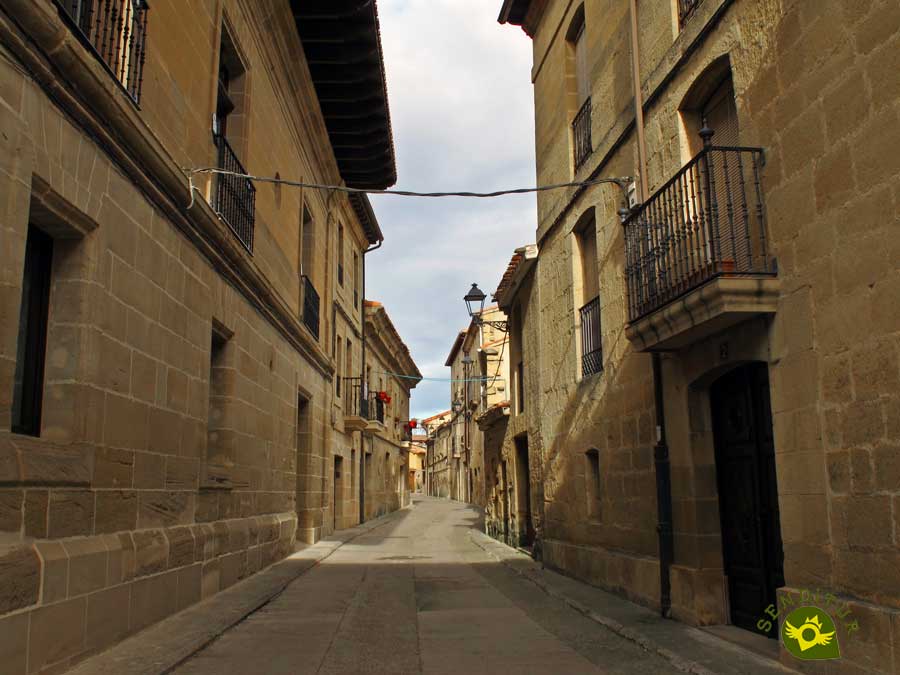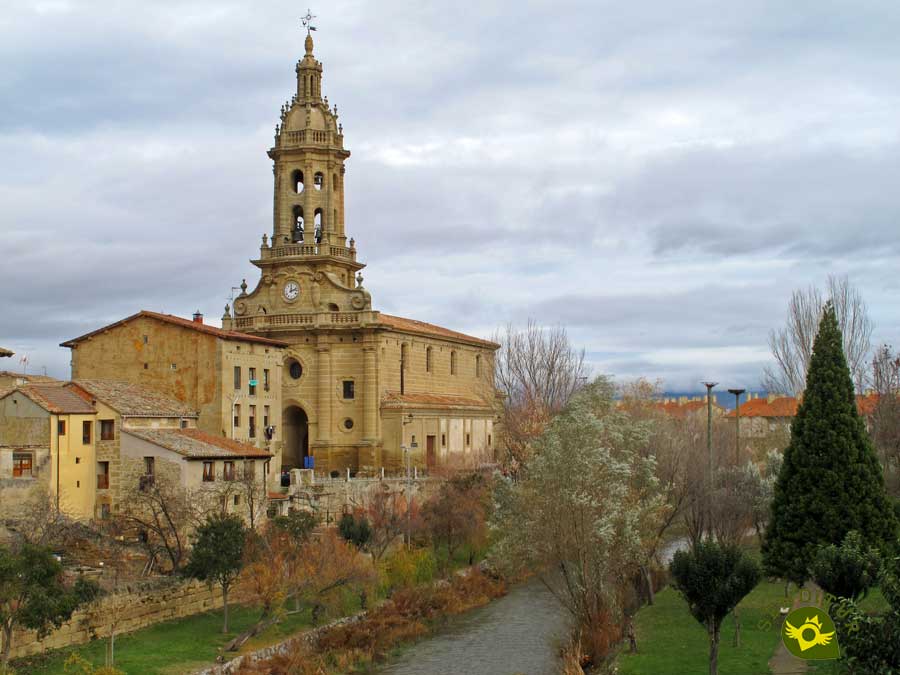It is located to the northwest of the Autonomous Community of La Rioja, at the foot of Mount El Bolo and is crossed by the River Tirón. The first and oldest writing in which it is mentioned, a Real Cédula de Sancho de Navarra, is from 1062, and in 1086 a Cuzcurritano called Servando is alluded to in the life of Santo Domingo de Silos following a miracle. Cuzcurrita de Río Tirón, in the Middle Ages, was a stronghold. Lordship with Henry II of Castile, was walled, and had the castle outside the walls. From 1796 it formed part of the province of Burgos until the province of Logroño was created.

Walking through the typical streets, squares and small squares of a stately village such as Cuzcurrita de Río Tirón, we will come across beautiful mansions that carefully resist the passage of time. Outstanding among them, next to the river, in the Plaza Mayor stands the majestic church of San Miguel built in the eighteenth century in Riojan Baroque style. The medieval bridge, which crosses the waters of the River Tirón, was built by the Cuzcurritanos themselves in the 15th century. The castle of Cuzcurrita de Río Tirón was built at the end of the 15th century by Pedro Suárez de Figueroa. It is a walled enclosure with cubes at the corners and a slender homage tower that has no windows in its walls. A restored wash-house began its history in early 1862. Already on the outskirts of the town, in the mount Bolo, you can see the Rollo, a vestige of the lordship of the place. The hermitage of Sorejana, of Romanesque style, can be reached through the castle wall, going up the waters of the river Tirón. The hermitage of Nuestra Señora de Tironcillo is about three kilometres from the village following the course of the river and was built in the middle of the 18th century in the Baroque style.

Cuzcurrita del Río Tirón celebrates festivities in honour of Our Lady of Tironcillo, including a pilgrimage, on 27 May and 29 September, it celebrates its patron saint, Saint Michael the Archangel, for everything great.
In Cuzcurrita de Río Tirón there are traditionally several pilgrimages a year. In one of them, which is celebrated the weekend before Easter, the Virgin of Sorejana is carried in procession to her hermitage where she will spend the summer months looking after the fields and crops, and on 8 September she is transferred again to the parish of San Miguel Arcángel where she will look after the village and its inhabitants.

All the Cuzcurritanos know, from their childhood, the Caseta Bonita, beautiful rustic building, that during more than a century served as shelter to the farmers during the hot days of the threshing, process of crushing of the harvest. In the past, almost all the threshing places in the village had a stone or "carricias" hut, where the threshing tools were kept, the drink was kept fresh and the farmers were sheltered from the inclement weather.

Cuzcurrita de Río Tirón is one of the few villages in La Rioja that maintains the original names of its streets, names such as Primer Cantón, Segundo Cantón, Tercer Cantón and Cuarto Cantón, or calle del Cierzo and Carnicerías. Streets that have kept, since 1865, the tiles that collected the names and numbers, along with the term 'accessory'.
MORE ROUTES AVAILABLE, DON'T MISS IT...
MORE PLACES AVAILABLE, DON'T MISS IT...
Cuzcurrita de Río Tirón can be reached via the LR-201 road, which joins Tirgo and the N-232 on one side and Herramelluri and Santo Domingo de La Calzada on the other.
Cuzcurrita de Río Tirón has a bus stop which, on its regular line, connects it with Burgos and Logroño and with the rest of the towns on the route.
SENDITUR is not responsible for any variation in the information described, as well as for the misuse of its guides and recommends that everyone be responsible and prudent in carrying out the activity. Likewise, we invite you to document yourself with books and specialized guides to complement the information described. From the commitment of SENDITUR with Nature and the respect to the balance of the environment, SENDITUR urges you to travel in a responsible way, with low environmental impact and respecting at all times the Natural, Cultural and Social environment wherever you go. For any suggestion, SENDITUR invites you to send an email to .
Continue watching …